
The Traditions of ANZAC Day
15 March 2024- ANZACspirit
- History & commemoration
- Ideas & info
From military protocols to home-baked treats, ANZAC Day traditions date back more than a century. Most Australians would be familiar with them – but do you know why and how these traditions came to be?
ANZAC Day rosemary
Traditionally pinned to lapels or medals on ANZAC Day, rosemary has been a symbol of remembrance since ancient times. But rosemary became especially significant to ANZAC Day following World War I.
Native to the Mediterranean coast, rosemary grows wild on the slopes of the Gallipoli peninsula. As the tale goes, a wounded digger brought home a small rosemary bush from ANZAC Cove. He planted it in the grounds of the Army Hospital at Keswick, South Australia, and cuttings from that bush have been used to propagate rosemary plants across Australia.
Since then, Australians and New Zealanders have worn sprigs of rosemary on ANZAC Day in memory of the fallen.
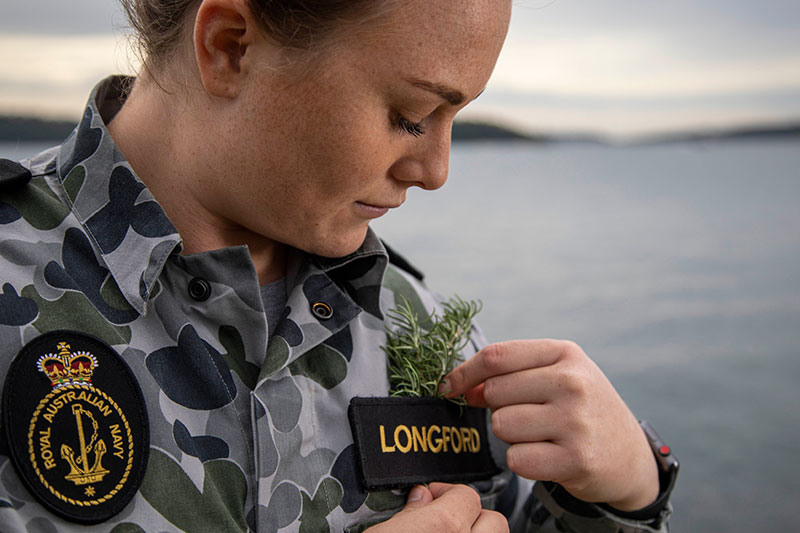
Image: Defence Australia - Leading Seaman Maritime Personnel Operator Mardi Longford from HMAS Kuttabul
Dawn Service
ANZAC Day Dawn Services are public commemorative ceremonies usually conducted by the RSL with involvement from the three arms of the Australian Defence Force – Navy, Air Force and Army.
In line with their name, these services begin just before dawn, with the sun rising as they draw to a close. Many of the cenotaphs where Dawn Services are held are in beautiful locations, which adds to the poignancy of the occasion.
But why dawn?
An Australian battalion held a dawn service on the Western Front on the first anniversary of the Gallipoli landing, and Dawn Services began to be observed around Australia in subsequent years. The timing is likely based on the fact that the ANZAC forces started the landing on the Gallipoli peninsula at dawn.
The ANZAC Day Dawn Service is wreathed in protocol and tradition, and every element has significance.
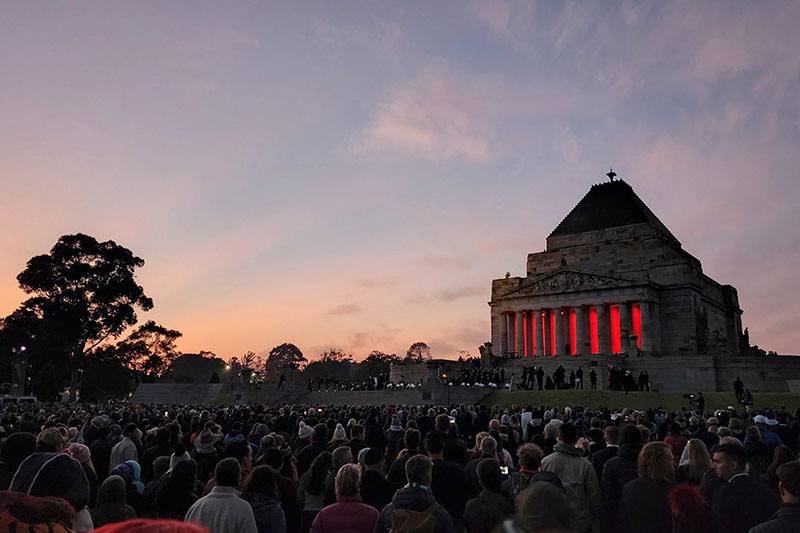
Image: Defence Australia - Crowds gather at the Shrine of Remembrance in Melbourne for the Dawn Service in 2022.
The catafalque party
At ANZAC Day and other remembrance ceremonies, you'll often see four members of an armed guard. These four people – most commonly of the Defence Force – are known as a catafalque (‘cat-a-falk’) party and act as a mark of respect for the fallen until the end of the service.
They stand, head bowed and with the weapons they are carrying reversed, around a cenotaph or shrine. The catafalque party is posted at the start of any ceremony and leaves their posting after the playing of the National Anthem.
While the origin of this tradition is not clear, it’s thought to have been used by a Commonwealth soldier at the execution of Charles I in 1649 and again at the funeral for John Churchill, Duke of Marlborough in 1722. Today, you are most likely to see a catafalque party during ANZAC Day or Remembrance Day services, while a person (such as a politician or member of royalty) who has died lies in state for the public to pay their respects, or during a military funeral in a church.
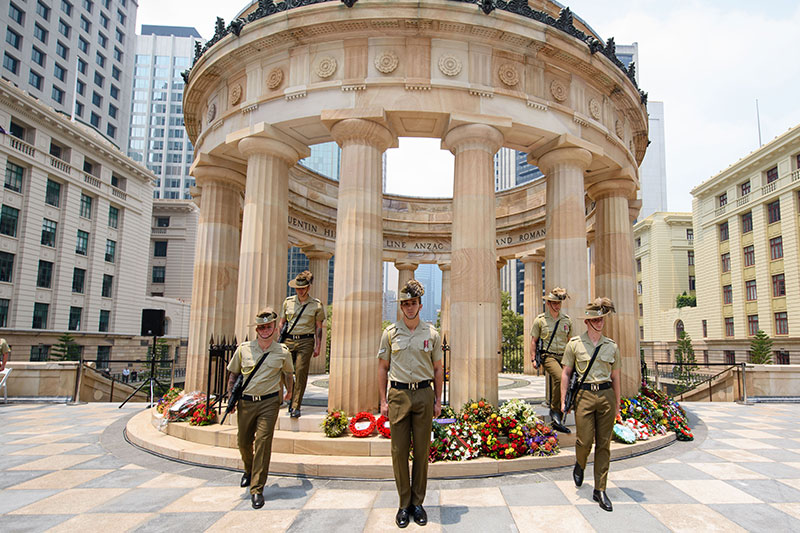
The catafalque party at ANZAC Square in Brisbane, 2022.
The Ode of remembrance
Often recited at remembrance ceremonies – particularly those on ANZAC Day – the Ode was penned by English poet Laurence Binyon.
Shortly after WWI was declared, with heavy casualties already being reported, Binyon was moved to write For the Fallen.
Since 1921, the fourth stanza of this poem – known as the Ode – has become a central part of ANZAC Day ceremonies, encapsulating Australia’s collective sense of respect and loss for the service people who gave their lives during WWI, and in all conflicts since:
They shall grow not old, as we that are left grow old;
Age shall not weary them, nor the years condemn.
At the going down of the sun and in the morning
We will remember them.
The Last Post
The haunting sound of a lone bugler sounding the Last Post is possibly one of the most emotionally evocative tunes Australians know. And perhaps the only that sees people acknowledge it with a moment’s silence as it plays.
The Last Post was one of the many bugle calls sounded daily in British Army camps and was traditionally played to signal the end of a soldier’s day. At commemorations including ANZAC Day, the Last Post has been adopted to herald the service people who have gone to their final rest, symbolically marking the end of their duty.
The Last Post is played at ANZAC Day services after the Ode is recited and before the minute’s silence.
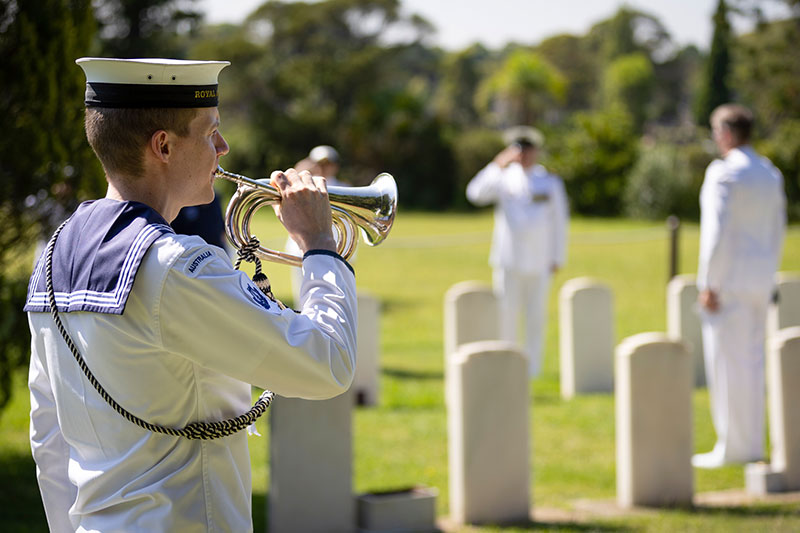
Image: Defence Australia - Able Seaman Musician Phillip Eden sounds the Last Post.
ANZAC Day minute of silence
A minute of silence (or two) is always observed at ANZAC Day services, and on Remembrance Day. It is a moment of solemn reflection and a gesture of respect to our fallen soldiers.
One man credited with starting this tradition was Edward George Honey, a Melbourne journalist and WWI veteran who lived in London after the war. Honey was dismayed that the noisy end-of-war celebrations gave little regard to the sacrifice that made them possible. He wrote to the London Evening News, suggesting that the nation observe five minutes’ silence in memory of the fallen.
Inspired by a two-minute pause observed at his local church, South African author and politician Sir Percy Fitzpatrick proposed a similar idea to King George V.
A trial by Buckingham Palace guards showed that five minutes was too long. So, George V accepted that The Silence should be two minutes in length and called for all Commonwealth countries to observe it on Armistice Day (11 November – now Remembrance Day).
In 1997, our Governor-General issued a proclamation urging Australians to observe one minute of silence on 11 November, and this tradition is now the norm at Remembrance Day and ANZAC Day services.
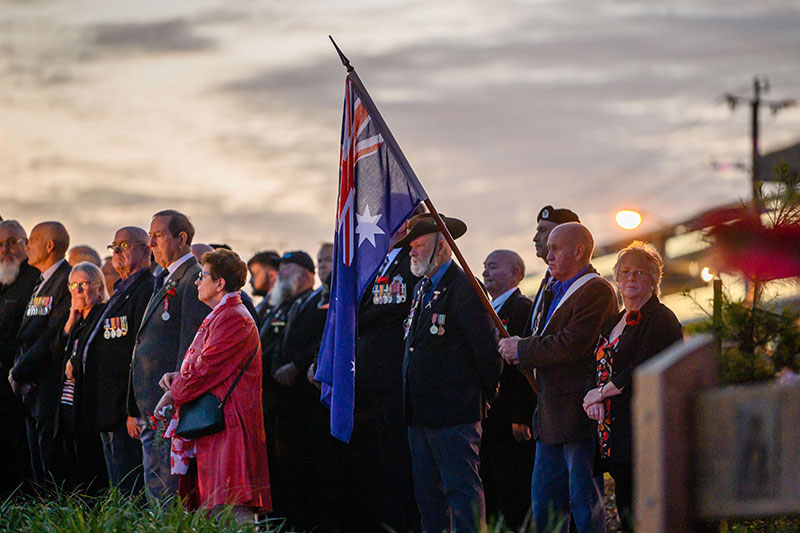
A minute silence observed at an RSL Queensland Sub Branch Dawn Service.
The Reveille and the Rouse
At Dawn Services, the minute’s silence is broken by the Reveille – traditionally, the first call of the day to wake sleeping soldiers.
At all other commemorative services, the minute’s silence is broken by the Rouse, which traditionally calls soldiers to their duties.
Gunfire breakfast
Many Australians enjoy a ‘gunfire breakfast’ between the ANZAC Day Dawn Service and mid-morning march. A gunfire breakfast typically involves rum-laced coffee or tea, hot food such as bacon and eggs, and is a chance for veterans – and often other community members – to enjoy shared camaraderie.
The custom stems from ‘gunfire’ – a mix of rum and black tea dating back to at least the 1890s. It was made by British Army soldiers – likely as a warming dash of morale or liquid courage ahead of the day’s battle – and later adopted by Australian and New Zealand forces.
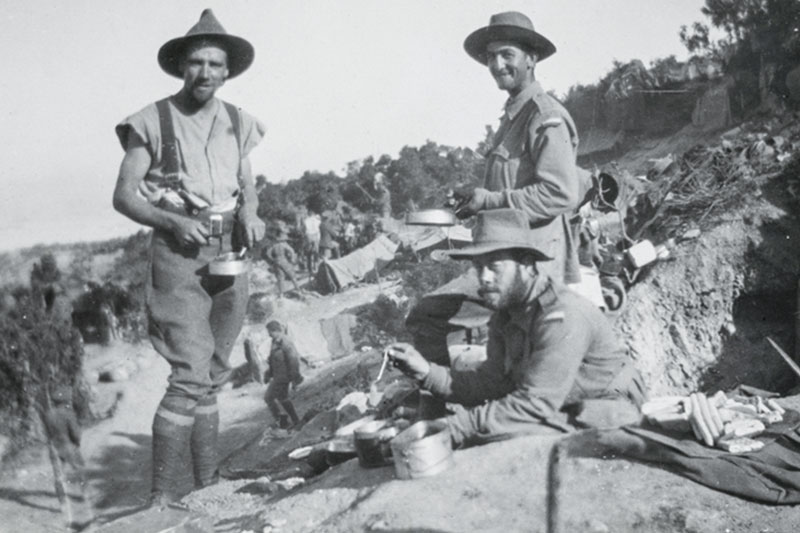
Image: Australian War Memorial - Soldiers of the 4th Battalion AIF at the top of Shrapnel Gully, Gallipoli having breakfast.
ANZAC biscuits
ANZAC biscuits have become an iconic symbol of 25 April. But did you know that this humble bite was earlier known as a ‘soldiers’ biscuit’?
While their origins date back to the 1820s, these sweet treats – made from common pantry staples like oats, sugar, flour, butter, golden syrup, and bicarb soda – were a popular fundraiser during WWI.
With their simple recipe and long shelf life, the biscuits also became a ‘go-to’ for Australian families to send to men fighting on the front lines.
Check out our tried-and-true recipe for ANZAC biscuits.

‘Lest we forget’
Three words, more than any other, encapsulate the meaning of ANZAC Day: 'lest we forget’.
Inscribed on war memorials and a key part of remembrance ceremonies, ‘lest we forget’ comes from Recessional – an 1897 poem by Rudyard Kipling, which echoes a line from the Bible (Deuteronomy 6:12).
These words – meaning ‘it should not be forgotten’ – warn of what might happen if we forget the power of the Lord. The phrase was adopted for commemoration services to warn us that, if we forget the sacrifice of those who died in war, we are likely to repeat the futility and obscenity of armed conflict.
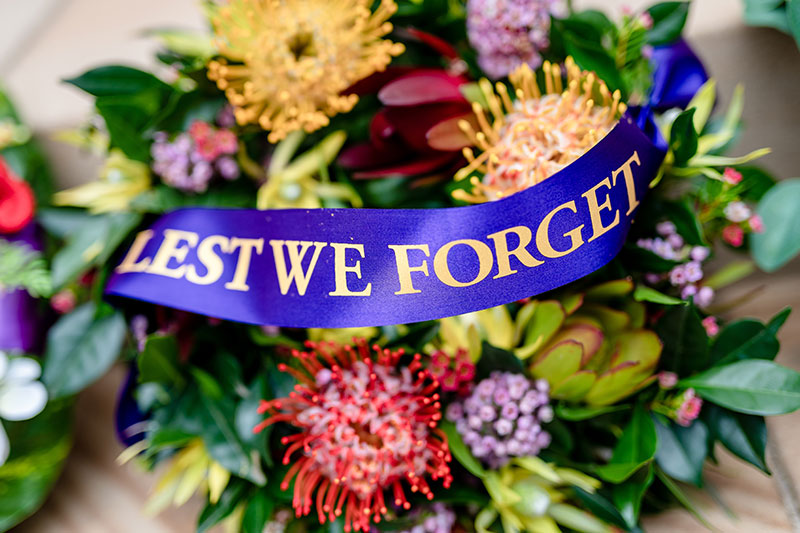
How will you commemorate ANZAC Day?
Since WWI, more than 1.5 million Australians have served in wars, conflicts and peacekeeping operations.
On ANZAC Day (25 April), we invite you to honour their invaluable contribution and commemorate in a way that is meaningful to you.
Attend an RSL Sub Branch service, take a quiet moment to reflect at home or donate to the ANZAC Appeal, and help keep the ANZACs’ legacy alive.
Lest we forget.
Loading
